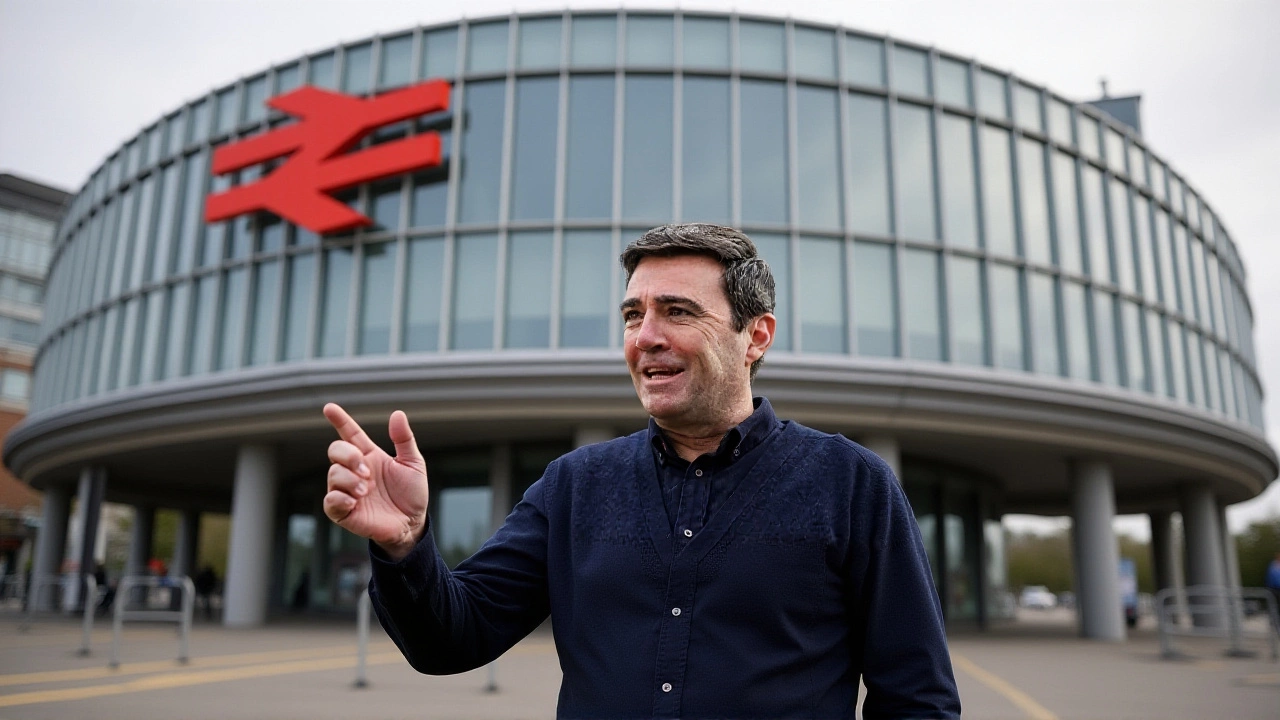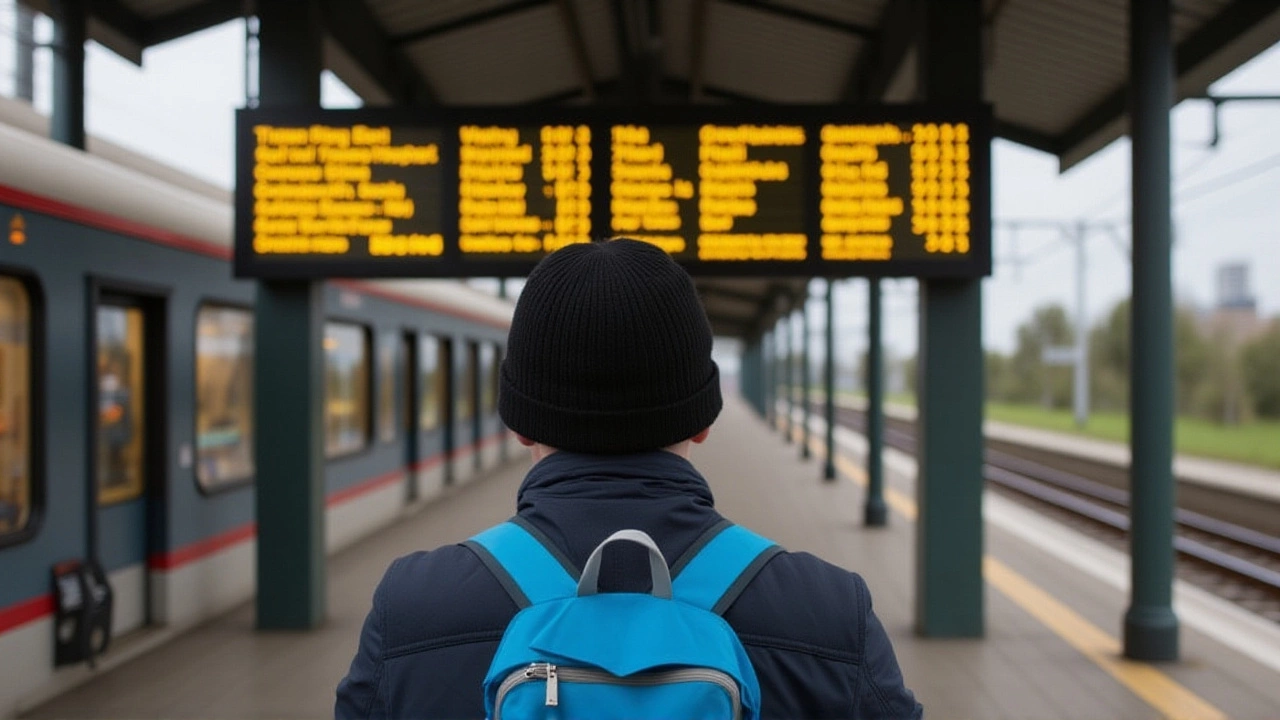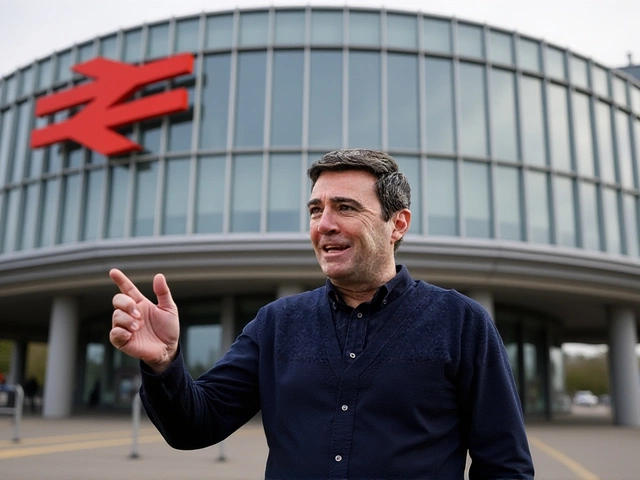Northern Powerhouse Rail Delays Keep Greater Manchester’s Rail Future in Limbo

When Northern Powerhouse Rail first rolled out in the 2016 budget, it was billed as the missing link that would stitch together Liverpool, Manchester, Sheffield and a string of other northern hubs. Greater Manchester was poised to become the keystone of that network, but a cascade of postponements has turned optimism into a waiting game.
Planners originally promised a Strategic Outline Business Case (SOBC) by the end of 2018. That deadline slipped to 2020, then to the unveiling of the Integrated Rail PlanUnited Kingdom in November 2021. Each delay ripples through local development plans, leaving city officials, commuters and investors in a state of limbo.
Historical context: From HS3 ambition to today’s stalled timeline
The brainchild of the Institute of Public Policy Research (IPPR) in August 2016, the project was originally called HS3, a southern sibling to the high‑speed HS2 line. The IPPR’s call to "prioritise HS3 over HS2" highlighted early scepticism about where the UK government should pour its rail money. A year later, former chancellor George Osborne publicly urged the Treasury to commit to the scheme, riding the wave of Crossrail 2 approvals and the July 2017 decision to scrap several electrification projects.
Since then, the proposal has morphed from a high‑speed line into a broader "network‑enhancement" programme, involving upgrades, new stations and the development of Other Significant Economic Centres (OSECs). The shift reflects both political compromise and the technical complexities of weaving new routes through densely built urban cores.
Current delays and the planning maze
Transport for the North (TfN) remains the lead body coordinating the study phase. Its engineers are juggling three major decisions:
- Whether to refurbish the existing Manchester‑Sheffield corridor or carve out an entirely new line.
- The design of a dedicated NPR station at Manchester Piccadilly – underground "deep‑tube" versus a surface turnback platform.
- How to integrate the Liverpool hub, a £6 billion city‑centre station announced in March 2019, with both HS2 and NPR services.
Every option carries a different price tag and construction timeline, meaning the final business case cannot be sealed until the trade‑off matrix is clear. "We’re essentially writing a choose‑your‑own‑adventure for the north’s rail future," said Sarah Jennings, TfN’s chief executive, during a briefing on 1 October 2025.
Manchester Piccadilly: Underground dream or surface shortcut?
City planners have long known that Piccadilly, the busiest station in the region, will need a new platform configuration to handle the extra capacity NPR promises. Two concepts dominate the debate:
- Deep‑tube underground station: Tunnels would sit beneath the existing tracks, providing a seamless transfer to HS2 and allowing high‑speed trains to bypass surface congestion. Estimated cost: £2.3 billion; construction window: 2027‑2034.
- Surface turnback hub: A new set of platforms built adjacent to the current station, quicker to deliver (2026‑2030) but potentially limited by space constraints and future capacity needs.
Mayor Andy Burnham warned that "the choice we make today will either lock us into a 30‑year growth path or box us into a bottleneck that kills jobs tomorrow." Local business groups echo that sentiment, citing the station’s role in the broader Greater Manchester Spatial Framework.
Liverpool’s £6 billion gamble
The commission set up in 2019 to design Liverpool’s new central station aims to accommodate both HS2 and NPR trains. Architectural renderings suggest a glass‑capped concourse that could become the city’s new gateway. Yet funding remains a moving target; the Treasury has postponed final allocations pending the IRP’s next review cycle.
Mayor Steve Rotheram of Liverpool said, "Without a modern hub, Liverpool will forever be a peripheral player in the north’s economic engine." The project also promises thousands of construction jobs, a point highlighted in the latest Labour Party transport policy paper.

What travellers really want: The October 2025 TfN survey
On 1 October 2025, Transport for the North released findings from a region‑wide passenger survey. After lower fares, the top three priorities were:
- More rail capacity – to reduce overcrowding on peak services.
- More direct services – especially north‑south links that avoid changing at London.
- Better connectivity to a wider range of destinations – covering OSECs like Hull, Newcastle and Preston.
Only 12 % of respondents cited speed as the primary factor, underscoring that capacity and convenience trump raw velocity for everyday commuters.
Political fallout and the road ahead
The perpetual postponements have sparked criticism from local leaders. In a March 2025 council meeting, the Greater Manchester Combined Authority voted a "no‑confidence" motion on the national transport strategy, arguing that "uncertainty is a catalyst for economic stagnation." Meanwhile, the Department for Transport (DfT) maintains that a rigorous business case is essential to secure taxpayer value.
The next milestone is the IRP’s implementation phase, slated for early 2026. If the Treasury green‑lights the £6 billion Liverpool station and the Manchester underground option, construction could kick off by late 2027. Until then, planners, politicians and the public will continue to watch the clock.
Key facts at a glance
- Original SOBC deadline: Dec 2018 → postponed to 2020 → finally published Nov 2021.
- Estimated cost for Manchester underground station: £2.3 billion.
- Liverpool hub budget: £6 billion.
- October 2025 TfN survey: capacity (1st), direct services (2nd), connectivity (3rd) priority.
- Key players: George Osborne, Andy Burnham, Sarah Jennings, Transport for the North.
Frequently Asked Questions
How does the delay affect commuters in Greater Manchester?
Without a dedicated NPR station at Piccadilly, existing platforms will quickly reach capacity, leading to longer waiting times and more crowded trains during peak hours. The delay also stalls planned direct links to northern cities like Sheffield, meaning commuters must continue using indirect routes that add 30‑45 minutes to journeys.
What are the proposed station options at Manchester Piccadilly?
Two concepts dominate: an underground deep‑tube station that would sit beneath the current tracks and allow high‑speed trains to bypass surface congestion, and a surface turnback hub built next to the existing platforms for quicker delivery. The underground option promises higher capacity but carries a bigger price tag and longer construction window.
When is the Integrated Rail Plan expected to move from paper to practice?
The Department for Transport has earmarked early 2026 for the first implementation wave. Funding approvals for the Liverpool hub and the Manchester underground design are expected later that year, positioning 2027 as the earliest realistic start date for major construction.
Who is leading the planning for the Liverpool city‑centre station?
A joint task force comprising Network Rail, HS2 Ltd and Transport for the North oversees the £6 billion project. The commission, announced in March 2019, reports to both the UK Treasury and the Liverpool City Council.
What did the October 2025 TfN survey reveal about passenger priorities?
Beyond cheaper fares, the survey showed that 68 % of respondents want more rail capacity, 61 % demand more direct north‑south services, and 54 % seek better links to additional northern destinations. Speed ranked lower, with only 12 % naming it a top priority, highlighting a shift towards convenience over sheer velocity.

